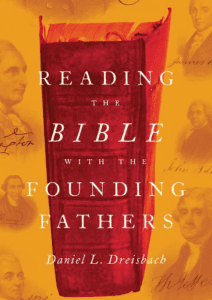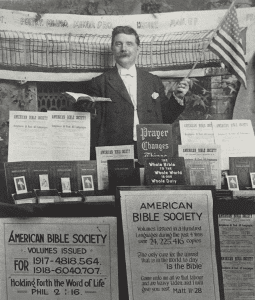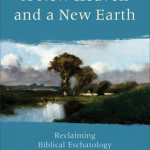It is not unusual for a first-time Bible reader to encounter a New Testament author quoting an Old Testament author, for the reader to wander back to the Old Testament to read that text too, and discover — “Wow, that’s not quite what the Old Testament author had in mind.” One of my favorites is how Matthew sees Jesus’ parents taking him to Egypt and then back to the Land of Israel (to the Galilee in fact) and to see in that move a “fulfillment” of Hosea where it says “out of Egypt I have called my son.” In Hosea “son” means Israel and refers to the Exodus… well, that’s not quite the same as what Matthew was on about.
Have you ever explained to a Bible reader how the New uses the Old? What would you tell that person? What are the major ideas? Which text in the NT would you use first?
Which is why we need an introductory book to how the earliest Christians read the Old Testament. Greg Beale, in his book Handbook on the New Testament Use of the Old Testament: Exegesis and Interpretation (Baker Academic, 2012) provides for advanced college students and seminary students such a book. One does not have to know Hebrew, Aramaic or Greek to make use of this book even if it is rich in detail at times.
That problem of “non-contextual” readings of the Old Testament (remember, it was the one and only Bible for the earliest Christians) has a number of arguments in its favor though Beale thinks they arguments are often taken too far. Thus, there is the argument that the earliest Christians were using typical, non-contextual Jewish methods of interpretation, that the early Christians were using a “testimony book” which had quotes and not full contexts of the Bible, that their “christocentric” or “christotelic” approach permitted them to override the Old Testament context, that they were using the OT rhetorically but not contextually, and that postmodernity reveals that those authors were reading their ideas into the OT. Beale thinks much of this has been overcooked.
The issue is also over typology, something that gets abused in the church and therefore gets a bad name, but it’s something the NT authors clearly do — do the NT authors see analogies within their theology that would not have been seen in the original OT? We are drawn back into the salvation-history discussion: once one admits that Christ is the fulfillment, the Old begins to be read toward and in light of Christ. In other words, it is “contextual” exegesis.
What Beale can do for most any Bible reader is provide some method for anyone wanting know how to begin seeing how the NT appropriates and reads the OT:
1.Identify the OT reference: is it a quotation or an allusion? (He’s got criteria for determining allusions.)
2. Analyze the broad NT context where the OT reference occurs.
3. Analyze the OT context both broadly and immediately, esp thoroughly interpreting the paragraph in which the quotation or allusion occurs.
4. Survey the use of the OT text in early and late Judaism that might be relevant to the NT appropriation. [Requires some texts and some time.]
5. Compare the texts carefully, including the textual variants: NT, LXX, Hebrew Bible, targums, early Jewish citations of that text, etc.
6. Analyze the author’s textual use of the OT (which text does this author use?).
7. Analyze the author’s interpretive (hermeneutical) use of the OT.
8. Analyze the author’s theological use of the OT.
9. Analyze the author’s rhetorical use of the OT.
OK, this takes lots of work — for each text analyzed! But some of you are interested in this sort of thing, and this is a great place to start.
So, then, how does the NT use the OT?
1. To indicate direct fulfillment of prophecy.
2. To indicate indirect fulfillment of typological prophecy.
3. To indicate affirmation that a not-yet-fulfilled OT prophecy will assuredly be fulfilled in the future.
4. To indicate an analogical or illustrative use of the OT.
5. To indicate the symbolic use of the OT.
6. To indicate an abiding authority carried over from the OT.
7. To indicate a proverbial use of the OT.
8. To indicate a rhetorical use of the OT.
9. To indicate the use of an OT segment as a blueprint or prototype of a NT segment.
10. To indicate an alternate textual use of the OT.
11. To indicate an assimilated use of the OT.
12. To indicate an ironic or inverted use of the OT.
Complex indeed, but here is what is at work under it all:
1. They believe in corporate solidarity or representativeness.
2. Christ is the true Israel and church.
3. History is unified











